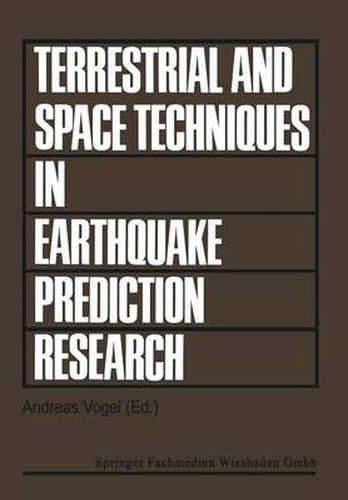Readings Newsletter
Become a Readings Member to make your shopping experience even easier.
Sign in or sign up for free!
You’re not far away from qualifying for FREE standard shipping within Australia
You’ve qualified for FREE standard shipping within Australia
The cart is loading…






This title is printed to order. This book may have been self-published. If so, we cannot guarantee the quality of the content. In the main most books will have gone through the editing process however some may not. We therefore suggest that you be aware of this before ordering this book. If in doubt check either the author or publisher’s details as we are unable to accept any returns unless they are faulty. Please contact us if you have any questions.
Seismology in the sense of earthquake research is no longer exclusively a matter of earthquake recording and the analysis of seismograms. The tremendous progress in earth- quake dynamic research, the development of sophisticated technologies, the advent of the space age, and the call for reduction of the earthquake hazards and for disaster pre- vention programs have spurred interdisciplinary research to discover the earthquake generating processes. The progress in observing the physical phenomena of earthquake generating processes and the identification of earthquake precursors among these phe nomena have placed research on the field of predicting earthquakes on the solid basis of exact earth sciences. The measurement of the phenomena of slow-motion dynamics such as the move- ment of tectonic plates, the accumulation of strain, displacements observed in fault zones, and the temporal variations of physical rock properties fall into the domain of geodesists and geophysicists rather than seismologists. However, seismology in the broadest interpretation of earthquake research requires all observable phenomena of slow-motion dynamics in order to constrain models of focal mechanism and to penetrate deeper into earthquake source physics. Interdisciplinary research is on the way to open us new dimensions in earthquake and earthquake predic- tion research.
$9.00 standard shipping within Australia
FREE standard shipping within Australia for orders over $100.00
Express & International shipping calculated at checkout
This title is printed to order. This book may have been self-published. If so, we cannot guarantee the quality of the content. In the main most books will have gone through the editing process however some may not. We therefore suggest that you be aware of this before ordering this book. If in doubt check either the author or publisher’s details as we are unable to accept any returns unless they are faulty. Please contact us if you have any questions.
Seismology in the sense of earthquake research is no longer exclusively a matter of earthquake recording and the analysis of seismograms. The tremendous progress in earth- quake dynamic research, the development of sophisticated technologies, the advent of the space age, and the call for reduction of the earthquake hazards and for disaster pre- vention programs have spurred interdisciplinary research to discover the earthquake generating processes. The progress in observing the physical phenomena of earthquake generating processes and the identification of earthquake precursors among these phe nomena have placed research on the field of predicting earthquakes on the solid basis of exact earth sciences. The measurement of the phenomena of slow-motion dynamics such as the move- ment of tectonic plates, the accumulation of strain, displacements observed in fault zones, and the temporal variations of physical rock properties fall into the domain of geodesists and geophysicists rather than seismologists. However, seismology in the broadest interpretation of earthquake research requires all observable phenomena of slow-motion dynamics in order to constrain models of focal mechanism and to penetrate deeper into earthquake source physics. Interdisciplinary research is on the way to open us new dimensions in earthquake and earthquake predic- tion research.